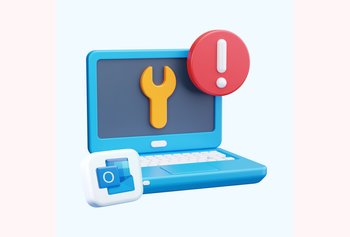A step-by-step guide to measuring IQS for your support team

Table of contents
Did you know that a lot of your customers wouldn’t bother to complain if they had a poor experience? They’d simply switch brands and there’d be no way for you to find out what exactly happened.
In such cases, how do you find out what’s going wrong with customer interactions? How do you get insights on where the ball is being dropped when you don’t hear it from your customers?
That’s where the Internal Quality Score (IQS) comes in.
It’s a metric that compares interactions you have with customers against certain internal benchmarks and standards to give you insight into what’s working, what’s not, and how you can improve.
Let’s dive deeper into how IQS can help you deliver great customer service.
Table of Contents
- TL;DR
- What is IQS?
- Why should you measure Internal Quality Score?
- How do you calculate Internal Quality Scores in customer service?
- How do you set benchmarks for your Internal Quality Score?
- What to do with your IQS?
- How do you set up IQS targets?
- How to improve your IQS?
- Make Internal Quality Score work for your team!
- FAQs
TL;DR
Internal Quality Score (IQS) is a critical framework for measuring and improving customer service quality. Here’s a quick rundown:
- IQS is a tool that helps maintain service consistency by aligning your support team’s performance with company standards.
- To measure IQS, here are the steps you need to follow: define criteria, build a QA team, review customer interactions, and provide actionable feedback.
- Combine IQS with metrics like First Call Resolution (FCR),Customer Satisfaction Score (CSAT), and Net Promoter Score (NPS) to get a holistic view of performance.
- Use SMART goals, involve teams in goal-setting, and monitor progress with regular reviews. Stretch benchmarks can challenge teams to achieve better results.
What is IQS?
Every interaction you have with your customers matters. It has the potential to build or break relationships. Internal Quality Score (IQS) is a metric that helps measure and maintain the standards of these customer interactions by comparing them against set criteria.
The main difference between IQS and external feedback mechanisms – such as surveys or reviews – is that the former provides an internal perspective on customer interactions. It’s not about what your customers are saying but instead it is about hitting the standards that have been set by the company.
For example, one of your internal goals could be that every customer issue has to be responded to within 2 hours. But when you see support staff taking longer to respond to customers, it clearly indicates that there’s an issue that needs to be fixed.
Why should you measure Internal Quality Score?
Every organization would have some internal quality standards. For instance, one of Zappos’s core values is to treat customers with extreme empathy.
IQS helps bridge the gap between these values and what your teams actually do. The metric ensures that every customer interaction reflects your company’s standards and values, and points out areas of improvement along the way.
It is a proactive tool that helps spot potential issues early. By spotting these issues long before they escalate into full-blown problems that customers voice out, you don’t just safeguard quality. You also create a system to address issues early.
How do you calculate Internal Quality Scores in customer service?
Calculating the Internal Quality Score (IQS) is essential for gauging your team’s performance in a measurable way. You need to have a solid scoring system in place that factors company values and customer expectations.
This scoring system would evaluate customer interactions against key performance criteria so that you get to the quantity of what needs to be improved.
1. Set your evaluation criteria
Start by identifying what matters most to your customers and your business. Then, break down customer interactions into measurable criteria. Some standard criteria include accuracy, tone, compliance, resolution, and empathy.
You need to break these into measurable elements. For example:
- Accuracy: Is the information provided to the customer correct?
- Tone and Empathy: Was the communication professional and empathetic?
- Compliance: Did the agent follow company policies?
- Resolution Effectiveness: Was the issue resolved efficiently and completely?
- Proactivity: Did the agent anticipate and address additional needs?
Assign weights to each criterion based on its importance to your overall business.
For instance, accuracy may carry 40%, tone 20%, and compliance 10%. This ensures your scoring aligns with both customer expectations and business priorities. Let’s discuss more about it.
2. Develop a scoring system
Develop a clear and standardized rubric to evaluate each criterion. For instance, if quick resolution is a top priority for your customers, it might carry more weight than tone. Use a simple scoring system (e.g., 1 to 5) to keep evaluations consistent. For example:
5: Exceeds expectations
4: Meets expectations
3: Needs minor improvement
2: Needs significant improvement
1: Unacceptable
Let’s take the same response time as an example:
1: Response time exceeded 4 hours.
3: Response time was between 2-4 hours.
5: Response time was within 2 hours, demonstrating the company’s commitment to quick responses.
You can use a Yes (1 point) or No (0 points) scoring system for repetitive actions like the following processes. For example, if an agent responds within 2 hours but doesn’t follow the escalation procedure when needed, they might lose points for process adherence.
This simple scoring system ensures that all evaluations are consistent, fair, and aligned with your company’s goals.
Use your scoring framework to review interactions. In smaller companies, support team managers would probably have to do this. Bigger companies usually hire people specialized in QA for this. Irrespective of the approach, it’s important to train reviewers to apply the framework consistently to minimize subjectivity and avoid bias.
3. Score individual interactions
Look at a mix of phone calls, emails, and chats from different support agents. This random sampling ensures a fair representation and prevents bias. For reliable insights, aim for a sample size of 5-10% of total interactions.
Evaluate each interaction against your rubric. Score each criterion independently and record the results in a centralized system for easy aggregation.
For example,
| Criterion | Weight (%) | Score (1-5) | Weighted Score |
|---|---|---|---|
| Accuracy | 40 | 4 | 1.6 |
| Tone and Empathy | 20 | 5 | 1.0 |
| Compliance | 10 | 3 | 0.3 |
| Resolution Effectiveness | 30 | 5 | 1.5 |
| Total Weighted Score | 4.4/5 |
4. Collect and aggregate scores
Once all interactions are scored, calculate the total weighted score for all interactions earned by the agent or team and divide by the total possible points. Convert the final score into a percentage for clarity.
To calculate, you need to use this formula:

For example, if an agent scores 450 out of 500 total weighted scores for all reviewed interactions, their IQS is:

5. Use the right tools and give actionable feedback
Let’s be honest. Manual quality monitoring isn’t going to cut it anymore. You need the right tools to spot issues before they become problems your customers complain about.
AI-driven analytics tools like Hiver, Zendesk, and more can help you track trends like repetitive complaints, resolution times, or even the tone your agents use.
But here’s the thing: tools alone won’t fix anything. It’s what you do with those insights that matter. For example, if multiple agents struggle to meet the 2-hour response time, use the insights to revise workflows, provide training, or introduce better tools.
- Use tools: Speech analytics, quality monitoring software, and CRM integrations to automate data collection and analysis.
- Provide feedback: Highlight strengths, address weaknesses, and suggest actionable solutions, like better training or refined processes.
- Encourage self-reflection: Let agents conduct self-assessments and compare them with IQS scores to drive awareness and growth.
6. Review and adjust criteria regularly
Customer expectations and business priorities evolve, and so should your IQS framework. Set clear benchmarks and track IQS trends over time to measure improvement. Regularly revisit your scoring criteria (e.g., quarterly or annually) to ensure it remains relevant.
Update weights or criteria as needed based on the following:
- New customer expectations or feedback.
- Changing business objectives.
- Suggestions from customer service agents who apply the scoring framework.
By keeping your IQS framework dynamic, you’ll ensure it continues to drive meaningful improvements and stays aligned with both customer needs and company goals.
How do you set benchmarks for your Internal Quality Score?
Benchmarks help you see where you stand amongst other companies that are in the same niche. And that’s not different for IQS.
Usually, IQS benchmarks vary by industry and company size. But if I were to use some level of approximation, here are some general guidelines:
- 80% or Higher: A score above 80% is considered excellent and reflects strong adherence to quality standards.
- 80%-70%: This range indicates good performance but suggests room for improvement in specific areas.
- Below 70%: A score in this range signals significant issues that need immediate attention, such as gaps in training, processes, or compliance.
*The above scoring is purely approximate; it does not indicate the industry IQS benchmark.
Keep in mind that different industries have varying criteria for calculating IQS. For example, Qualtrics notes that customer experience benchmarking can lead to significant returns on investment by uncovering experience gaps and driving proactive changes.
By setting benchmarks for IQS, organizations can implement continuous improvement initiatives that directly enhance the customer experience. It’s a chance for your company and team to learn and grow. These benchmarks are a guide rather than a strict standard.
Pro Tip: Consider setting “stretch benchmarks” to challenge your team. For instance, if your current average IQS is 75%, aim for 80% within six months. Stretch benchmarks encourage continuous improvement without creating undue pressure.
How to combine IQS with customer service metrics?
While the Internal Quality Score (IQS) is a critical tool for assessing service quality, it works best when combined with other customer service metrics such as FCR, NPS, and CSAT – metrics which take into account external feedback.
Here is a quick rundown of what these metrics are:
| Metric | What does it measure? |
|---|---|
| Customer Satisfaction Score (CSAT) | CSAT measures customer satisfaction by asking customers to answer a simple question like, ‘How satisfied are you with the resolution?’. Customers rate their satisfaction on a scale of 1 to 5 or 1 to 10. |
| Net Promoter Score (NPS) | NPS is a measure of customer loyalty. It involves asking customers, ‘How likely are you to recommend our brand to your family and friends?’. Customers who select 9 or 10 are promoters, 7 or 8 are passives, and 0 to 6 are detractors. |
| First Call Resolution (FCR) | FCR measures the percentage of customer issues resolved on the first interaction. A high FCR indicates that your support team is extremely knowledgeable. For example, if your FCR is 80%, it means 80% of issues are resolved without requiring a follow-up. |
| Average Handling Time (AHT) | AHT measures the average time it takes for agents to resolve customer issues. Low AHT can indicate efficiency, but if paired with low IQS or CSAT, it might signal rushed or incomplete resolutions. |
| Customer Effort Score (CES) | CES tracks how easy it is for customers to resolve their issues. This metric focuses on reducing friction in the customer journey. For instance, long wait times or being transferred multiple times can negatively impact CES. A lower CES correlates with higher loyalty. According to Gartner, 96% of customers with high-effort experiences become more disloyal compared to only 9% with low-effort experiences. |
The best way to interpret IQS is to combine it with the above customer service metrics. For example, let’s imagine this:
A support team at a software company implements both IQS and NPS to measure performance. Here’s what they discovered:
💡Agents consistently earned high IQS marks for following protocols and providing accurate information.
💡Despite a high internal score, NPS revealed that customers were dissatisfied with their overall experience and unlikely to recommend the organization.
This discrepancy prompts the team to investigate further. While the agents performed well according to internal metrics (IQS),external factors such as response times, unresolved issues, or dissatisfaction with product features contributed to poor customer sentiment.
Further follow-up surveys with low NPS customers revealed a lack of knowledgeable and polite support staff.
With these insights, the team starts to implement targeted strategies like:
💡Additional training focused on problem-solving and decision-making for quick and effective resolution.
💡Streamlining workflows, improving the knowledge base, and increasing department collaboration to help reduce response time.
This shows the value of using IQS and NPS together. High IQS scores alone don’t guarantee customer satisfaction. These internal metrics must be paired with customer-centric metrics to identify gaps between internal performance and customer expectations.
Pro Tip: Use a dashboard to monitor all these metrics in real time. Seeing the data side by side helps you identify trends and make data-driven decisions.
What to do with your IQS?
Collecting Internal Quality Score (IQS) data is just the beginning. The real value lies in how you use this information to improve your team, processes, and overall customer experience.
1. Train and develop your team
Use IQS results to identify skill gaps and provide targeted training programs that address these areas. The goal is to ensure every agent receives the support they need to grow and excel in their role.
If support agents consistently score low on empathy, schedule interactive workshops focused on active listening and emotional intelligence. Include role-playing training exercises where agents practice responding to challenging customer service scenarios. This is a great way to prepare them for real-life scenarios.
To further improve their knowledge of empathy, consider integrating the following books into their training program:
- “Emotional Intelligence 2.0” by Travis Bradberry and Jean Greaves: It offers actionable strategies and a self-assessment test for improving EQ.
- “The Art of Empathy” by Karla McLaren: It explains empathy’s mechanics and provides tools that you can use on a daily basis.
- “Nonviolent Communication” by Marshall B. Rosenberg: It teaches how to connect through compassionate communication.
- “Empathy: Why It Matters, and How to Get It” by Roman Krznaric: It combines psychology and practical advice for deeper connections.
2. Refine processes and policies
IQS is a powerful tool for identifying inefficiencies or gaps in your processes and policies. When agents consistently lose points for specific criteria, such as delayed responses or unclear communication, it often signals underlying problems in the system or the workflows supporting them.
For instance, if agents consistently lose points for inconsistent resolutions, the root cause might be a lack of standardized troubleshooting guides, insufficient product training, or misaligned team priorities.
By identifying these patterns, you can address the root causes before they escalate into larger customer-facing problems. Create step-by-step guides, align your teams on best practices, and ensure tools and resources are user-friendly. This not only fixes internal bottlenecks but also ensures better customer experiences.
Pro Tip: Regularly revisit and refine workflows based on agent feedback and IQS trends. What works today may not be effective tomorrow as customer expectations evolve.
3. Celebrate wins and motivate agents
IQS is not just a powerful tool for identifying areas of improvement but also for recognizing and celebrating top performers.
Celebrate agents who significantly improve their IQS, even if they aren’t the top scorers. This reinforces the idea that growth and effort matter just as much as results. For example, an agent who improves their empathy score from 60% to 80% over a quarter receives a shoutout and a gift card during the team meeting.
By celebrating wins, you create a positive feedback loop that drives engagement and reinforces the behaviors that lead to exceptional service. Recognition motivates top performers and inspires the entire team to aim higher.
Pro Tip: To celebrate achievements publicly, you can introduce leaderboards, monthly awards, or recognition events. This ensures the criteria are transparent and aligned with your IQS goals to encourage healthy competition.
4. Track trends and adjust strategies
Analyze IQS data over time to spot trends. Are specific criteria consistently scoring low? Are scores dipping during peak seasons? Use these insights to adjust training schedules, staffing, or workflows.
For example, a support team notices that scores for “resolution effectiveness criteria” drop by 20% every holiday season. After reviewing workflows, they find that increased ticket volume overwhelms their current staffing levels. To address this, they:
- Hire temporary agents during peak periods.
- Automate responses for common queries using chatbots.
- Simplify escalation protocols to prevent bottlenecks.
Pro Tip: Create visual dashboards that display IQS trends over time. Use these to communicate findings with your team, highlight successes, and focus on improvement areas.
5. Integrate with other metrics
Keep in mind that IQS provides you with an internal perspective on the quality of support. But that’s not enough. It’s crucial to pair it with external metrics like Customer Satisfaction (CSAT),Net Promoter Score (NPS),or Customer Effort Score (CES).
This integration creates a 360-degree view of your customer service operations and helps you understand how internal quality impacts customer perception.
For example, a customer service team notices that while IQS scores for adherence to scripts and accuracy are high, NPS scores remain low. After analyzing feedback, they find that the scripted responses feel impersonal and frustrating to customers. The team adjusts their training to emphasize flexible and customer-focused communication.
Pro Tip: Use IQS as a predictive tool to identify and address issues before they escalate into customer dissatisfaction. For instance, if IQS highlights low empathy scores, act quickly to implement training sessions. By addressing internal gaps early, you can prevent them from negatively impacting critical metrics like CSAT or NPS.
How do you set up IQS targets?
Setting meaningful Internal Quality Score (IQS) targets is essential for driving improvement and aligning your team with organizational goals.
1. Establish a baseline
Start by analyzing your current IQS scores to understand where your team stands. Use historical data or an initial assessment period to calculate average scores across agents and criteria. This baseline will serve as your reference point for setting realistic goals.
For example, if your team’s average IQS is 75%, you might want to set a target of 80% for the next quarter.
2. Align targets with business objectives
Ensure that IQS targets reflect your broader business goals. If improving customer retention is a priority, focus on criteria such as resolution efficiency. If reducing costs is a goal, prioritize metrics like process adherence and handling time.
Pro Tip: Communicate how IQS targets contribute to the company’s success. This helps agents see the bigger picture and stay motivated.
3. Set SMART goals
Make your IQS targets Specific, Measurable, Achievable, Relevant, and Time-bound (SMART). This framework ensures your goals are clear and actionable. For example, instead of a vague goal like “improve IQS,” set a SMART goal such as “Increase team IQS from 75% to 85% within six months by focusing on resolution time and tone.”
4. Customize targets by role
Different roles may require different targets based on their responsibilities. For example, a technical support staff may have a higher weight on accuracy, while a sales agent may have to focus more on tone and empathy.
5. Involve the team in goal-setting
When setting targets, invite input from agents and quality analysts. Collaborative goal-setting fosters buy-in and ensures the targets feel fair and attainable.
6. Create milestones for long-term goals
For ambitious IQS improvements, break your target into smaller milestones. This helps track progress, celebrate incremental wins, and maintain long-term momentum. For example, if your annual goal is to increase IQS by 10%, set quarterly milestones of 2.5% improvements.
7. Monitor progress regularly
Set up regular check-ins to track progress toward your targets. Use dashboards or reports to share updates with the team and identify areas where additional support may be needed.
8. Adjust targets as needed
Targets should be challenging but achievable. If external factors, like a sudden spike in call volume, affect performance, adjust your targets to ensure they remain fair and realistic.
Pro Tip: Use unexpected challenges as learning opportunities. Analyze what went wrong and build solutions into your long-term strategy.
How to improve your IQS?
Improving your Internal Quality Score (IQS) requires a combination of targeted strategies, continuous training, and a focus on individual and team performance. Using it, you can enhance service quality, boost customer satisfaction, and create a culture of excellence
1. Provide regular training
You need to ensure that your team is equipped with the skills they need to succeed. Offer ongoing training tailored to specific IQS criteria, such as tone, empathy, or technical accuracy.
For example, if agents struggle with policy compliance, host workshops or refresher sessions where you take them through important company policies and ways to communicate them.
Pro Tip: Use real customer interactions as training examples to make sessions more relatable and effective.
2. Deliver constructive feedback
After each quality review, provide agents with specific, actionable feedback. Highlight what they’re doing well and clearly explain areas for growth.
Pair feedback with coaching sessions where agents can practice and refine their skills in a supportive environment.
3. Simplify processes
Complex workflows can lead to errors and low scores. Review your processes to identify and remove unnecessary steps that slow agents down or increase the likelihood of mistakes.
For example, if agents frequently miss details during calls, implement a structured checklist for each interaction.
4. Use technology
Use tools like AI-driven analytics, speech recognition, and customer service platforms to organize quality monitoring. These tools can identify patterns, flag recurring issues, and offer real-time insights to improve performance.
5. Focus on agent well-being
Agents under stress are more likely to make mistakes. So, ensure a supportive work environment that prioritizes your agent’s well-being through manageable workloads, flexible schedules, and stress management resources.
Pro Tip: Encourage short breaks between interactions to keep agents refreshed and focused.
6. Encourage peer learning
High-performing agents are a valuable resource for the team. Create opportunities for them to share tips and best practices with their peers.
Pro Tip: Host monthly “agent roundtables” where team members discuss common challenges and solutions.
7. Incorporate customer feedback
Using external feedback, such as CSAT or NPS scores, can help align your IQS criteria with customer expectations. If customers consistently highlight tone or resolution as pain points, prioritize improvements in these areas.
8. Track progress and celebrate wins
Monitor IQS trends to ensure your strategies are working. By celebrating the individual and the team’s improvements can boost morale and keep agents motivated. For example, acknowledge agents who achieve significant improvements with certificates, shoutouts, or small incentives.
9. Conduct regular quality calibration
Ensure consistency in evaluations by hosting calibration sessions with your quality assurance team. This ensures everyone evaluates interactions using the same standards.
10. Experiment and adapt
Continuous improvement requires flexibility. Experiment with new training techniques, scripts, or tools to see what works best for your team.
Pro Tip: Regularly review your IQS framework to ensure it evolves with changing customer expectations and business needs.
Make Internal Quality Score work for your team!
It’s your responsibility to ensure that customers are getting exceptional service. How can you know if you are giving exceptional service if you don’t measure?
Internal Quality Score (IQS) is a proactive tool for maintaining high standards, spotting gaps, and keeping your team aligned. It lets you take control by showing you where things are slipping through the cracks. This must be done before your customers start complaining (or worse, leave without saying a word).
Measuring only works if you make it actionable. To make IQS useful, you need to define clear criteria, pair it with external metrics like CSAT and NPS, and give your team the tools and feedback they need to thrive. Also, don’t forget to celebrate wins and adjust as you go.
In the end, IQS is more than just a metric. It’s a foundation for continuous improvement. It enables businesses to exceed expectations and deliver meaningful customer experiences.
FAQs
1. What is IQS?
IQS, or Internal Quality Score, is a metric used to evaluate the quality of customer service against set internal criteria. It measures how well interactions with customers align with a company’s predefined standards on tone, accuracy, compliance, and resolution.
2. Why is IQS important?
IQS is important because it helps you introspect how your company fares at handling customers. It tells you whether support staff are meeting the set standards and what you can do to improve their performance.
3. How is IQS different from other customer service metrics?
Most customer-focused metrics like CSAT or NPS involve asking the customer for feedback. But IQS is about getting an internal perspective – usually provided by quality assurance teams – on how your support team is doing.
4. What is a good benchmark for IQS?
A score of 80% or higher is considered excellent, but benchmarks vary by industry and company goals. Tailor your benchmarks based on your unique business needs and customer expectations.
5. How does IQS impact customer experience?
IQS tells you what is going wrong before it becomes a very apparent issue. This helps you quickly fix issues before customers start noticing them. The end result of doing this is higher retention rates and happier customers.
6. How can IQS help improve agent performance?
IQS provides agents with specific feedback on their strengths and areas for improvement. It enables targeted training and fosters a culture of continuous growth.

































